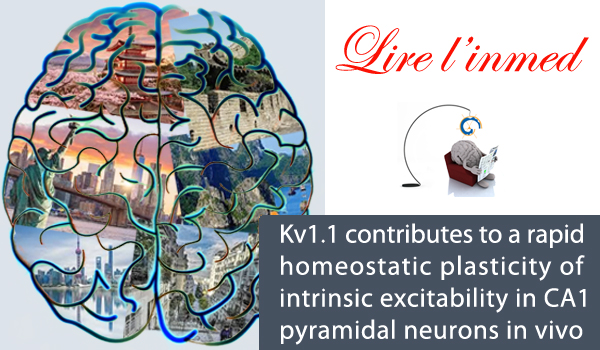Memorama. Activity of neurons in the hippocampus encodes places and events in our environment. Neurons that become active in new environments are particularly excitable. Therefore, preventing these neurons to be co-opted by all novel environments and protecting the memory they hold require a mechanism that dampens their excitation. Here, the authors show this occurs thanks to the activation of potassium channels located in the axon initial segment. Their location, away from spines, allows regulating neuron availability without loosing traces of synaptic activity, and thereby protects memories. (Ingrid Bureau)
Authors: Peter Morgan, Romain Bourboulou, Caroline Filippi, Julie Koenig-Gambini, Jérôme Epsztein
Scientific abstract: In area CA1 of the hippocampus, the selection of place cells to represent a new environment is biased towards neurons with higher excitability. However, different environments are represented by orthogonal cell ensembles, suggesting that regulatory mechanisms exist. Activity-dependent plasticity of intrinsic excitability, as observed in vitro, is an attractive candidate. Here, using whole-cell patch-clamp recordings of CA1 pyramidal neurons in anesthetized rats, we have examined how inducing theta-bursts of action potentials affects their intrinsic excitability over time. We observed a long-lasting, homeostatic depression of intrinsic excitability which commenced within minutes, and, in contrast to in vitro observations, was not mediated by dendritic Ih. Instead, it was attenuated by the Kv1.1 channel blocker dendrotoxin K, suggesting an axonal origin. Analysis of place cells’ out-of-field firing in mice navigating in virtual reality further revealed an experience-dependent reduction consistent with decreased excitability. We propose that this mechanism could reduce memory interference.
Paru dans Elife, décembre 2019
Plus de travaux de ce groupe ici

